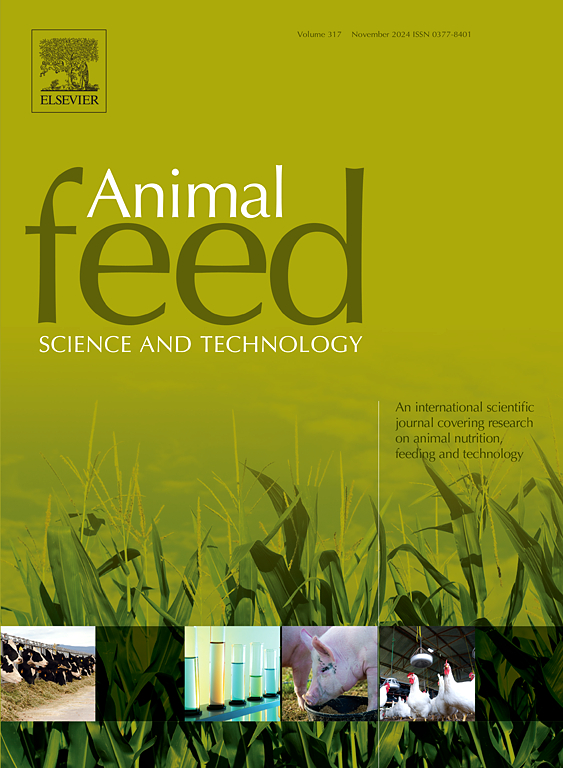Dietary bamboo vinegar powder improves growth performance, immunity, antioxidant capacity and lipid metabolism of largemouth bass (Micropterus salmoides)
IF 2.5
2区 农林科学
Q1 AGRICULTURE, DAIRY & ANIMAL SCIENCE
引用次数: 0
Abstract
Bamboo vinegar powder (BVP), a secondary product of bamboo charcoal production, contains multiple bioactive compounds. However, its effects on largemouth bass remain unclear. To investigate these effects, six experimental diets containing different BVP levels (0, 0.5, 1.0, 2.0, 4.0, and 8.0 g/kg) were designed, and a 56-day feeding experiment was conducted on largemouth bass (Micropterus salmoides, 7.00 ± 0.02 g). Results demonstrated significant increase in the weight gain rate (P < 0.05) and specific growth rate (P < 0.05) and decrease in the feed conversion ratio (P < 0.05) with administration of diet containing 2.0 g/kg BVP. In addition, BVP (0.5–8.0 g/kg) significantly improved the levels of health indicators, such as aspartate aminotransferase, alanine transaminase, and alkaline phosphatase (P < 0.05) in the liver. In terms of antioxidative properties, BVP (1.0–2.0 g/kg) improved the levels of antioxidant enzymes, including total antioxidant capacity (P < 0.05) and catalase (P < 0.05), reduced the malondialdehyde content (P < 0.05), and upregulated the expression of nuclear factor erythroid 2-related factor 2 (P < 0.05). Regarding lipid metabolism, BVP (1.0–8.0 g/kg) decreased the triglyceride (P < 0.05) and total cholesterol (P < 0.05) levels in the liver and improved hepatic lipid metabolism by upregulating the expression of lipid transport (hormone-sensitive lipase and lipoprotein lipase) and lipid metabolism (fatty acid transport protein and microsomal triglyceride transfer protein) genes (P < 0.05). With regard to inflammation, BVP (0.5–4 g/kg) modulated the expression of inflammatory factors (interleukin-8, transforming growth factor-β, and interleukin-10; P < 0.05) to improve the inflammatory response. Collectively, these results suggested that dietary BVP at a level of 2.0 g/kg can help improve growth performance, antioxidant capacity, and inflammatory response and reduce lipid deposition in the liver of largemouth bass.
求助全文
约1分钟内获得全文
求助全文
来源期刊

Animal Feed Science and Technology
农林科学-奶制品与动物科学
CiteScore
6.00
自引率
6.20%
发文量
266
审稿时长
3 months
期刊介绍:
Animal Feed Science and Technology is a unique journal publishing scientific papers of international interest focusing on animal feeds and their feeding.
Papers describing research on feed for ruminants and non-ruminants, including poultry, horses, companion animals and aquatic animals, are welcome.
The journal covers the following areas:
Nutritive value of feeds (e.g., assessment, improvement)
Methods of conserving and processing feeds that affect their nutritional value
Agronomic and climatic factors influencing the nutritive value of feeds
Utilization of feeds and the improvement of such
Metabolic, production, reproduction and health responses, as well as potential environmental impacts, of diet inputs and feed technologies (e.g., feeds, feed additives, feed components, mycotoxins)
Mathematical models relating directly to animal-feed interactions
Analytical and experimental methods for feed evaluation
Environmental impacts of feed technologies in animal production.
 求助内容:
求助内容: 应助结果提醒方式:
应助结果提醒方式:


